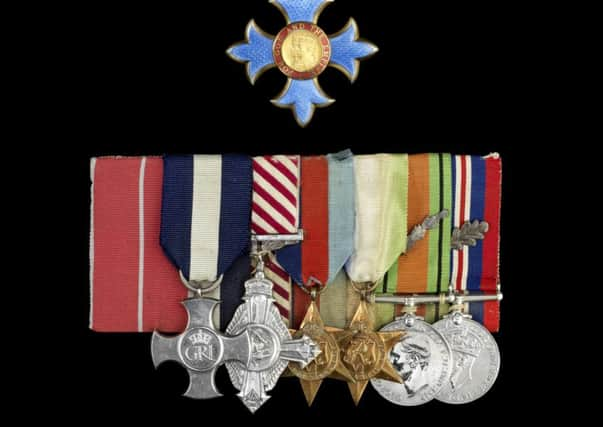National Museum buys Leith hero's medals


The Fleet Air Arm Museum – representing the flying arm of the Royal Navy – did not disclose the sum paid, but the medals were recently valued at £150,000-200,000.
Capt Brown, who flew with the Fleet Air Arm and died earlier this year aged 97, is regarded as Britain’s greatest ever flyer and one of the leading test pilots in the world.
Advertisement
Hide AdAdvertisement
Hide AdThe Leith-born hero flew a record 487 different types of aircraft, more than anyone else in history.
He also had the most aircraft carrier landings, with 2407 and the most catapult launches with 2721, while also carrying out some of the world’s first helicopter tests.
Capt Brown’s archive including his medals and flying logbooks from 1942 to his final flights for the Fleet Air Arm in 1970, failed to sell when they went under the hammer at Bonhams’ in London on Wednesday.
The medals include Capt. Brown’s Distinguished Service Cross, dated 1942, the Air Force Cross, dated 1947, the Defence Medal with King’s Commendation for Brave Conduct and the CBE he was awarded in 1970.
Advertisement
Hide AdAdvertisement
Hide AdA spokesman for the Museum said: “We are delighted to announce that we have been able to secure the medals and log books of Captain Eric ‘Winkle’ Brown following the intervention of a generous donor, who wishes to remain anonymous.
“It is fair to say that Captain Brown was by many measures the Fleet Air Arm’s most significant pilot of the post-war period and we are thrilled and honoured to be able to class this collection as one of our own.
“We can now preserve the record of innovation which is contained within Captain Brown’s log books which includes previously untapped information and display them for the world to see.
“Captain Brown went on to make many contributions of wider significance to aviation history, using his Fleet Air Arm experience to fly a world record breaking 486 types of aircraft.
“The Fleet Air Arm Museum was fortunate to work with Captain Brown in the last decades of his life and have been able to mark and honour his contribution in a number of ways.”